
The Catahoula Leopard Dog is an American dog breed named after Catahoula Parish, Louisiana. It became the state dog of Louisiana in 1979. It is recognized by the United Kennel Club under the name Louisiana Catahoula Leopard Dog, while the American Kennel Club Foundation Stock Service calls it Catahoula Leopard Dog. Both registries have assigned the breed a herding designation, although it has traditionally been used in hunting feral boars.
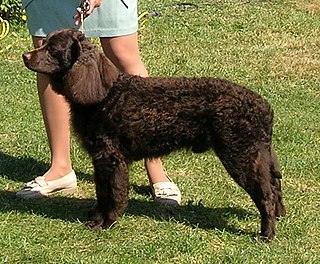
The American Water Spaniel is a breed of spaniel which originated in the United States. It was developed in the state of Wisconsin during the 19th century from a number of other breeds, including the Irish and English Water Spaniels. The breed was saved by Dr. Fred J. Pfeifer, who set up the breed club and standard, and whose work led to recognition for the breed by the United Kennel Club, and later, the American Kennel Club. While they are the state dog of Wisconsin, they remain a rare breed.

The Bluetick Coonhound is a breed of coonhound originating in the United States. The Bluetick Coonhound is known for its friendly personality, cold nose, and deep bawl mouth. It is most commonly used as a raccoon hunting dog, but is also kept as a pet.

Cocker Spaniels are dogs belonging to two breeds of the spaniel dog type: the American Cocker Spaniel and the English Cocker Spaniel, both of which are commonly called simply Cocker Spaniel in their countries of origin. In the early 20th century, Cocker Spaniels also included small hunting spaniels.
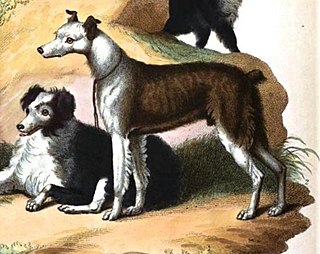
A cur was a dog breed used by cattle drovers in England. The breed is now extinct. In the United States, a short-haired dog used in hunting and herding is called "cur-tailed", or "cur" for short.
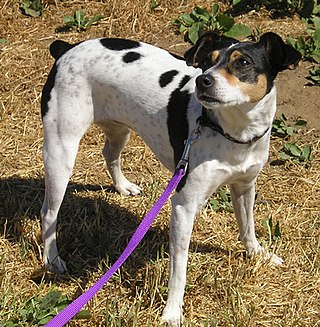
The Rat Terrier is an American dog breed with a background as a farm dog and hunting companion. They share much ancestry with the small hunting dogs known as feists. Common throughout family farms in the 1920s and 1930s, they are now recognized by the United (UKC) and American Kennel Clubs (AKC) and are considered a rare breed. Rat Terriers are an intelligent and active breed that can be kept both for pest control and as a family pet.

The American Hairless Terrier is a breed of companion dog from the United States that was developed from naturally hairless Rat Terriers.

The White Shepherd is a variety of the German Shepherd bred in the United States. Although white-coated German Shepherds have been known in Europe as early as 1882, in 1933 the breed standard was amended in their native Germany, banning white-coated dogs from registration. In the United States and Canada the coloration had gained a following and in 1969 a breed club was formed specifically for white-coloured German Shepherds, calling their variety the White Shepherd. The variety is recognized as a separate breed by the United Kennel Club.

The American Foxhound is a breed of dog, closely related to the English Foxhound. They are scent hounds, bred to hunt foxes by scent. United States Founding Father George Washington was key to the breed's early development.
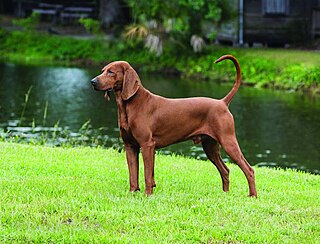
The Redbone Coonhound is an American breed of hunting dog. As a coonhound, the Redbone is primarily a hunter of small game that hide in trees, such as raccoons, opossums, and squirrels, but is also capable of handling big game like bears and cougars. Its hunting strategy is to tree wild game where hunters can then shoot the target, rather than directly hunting and subduing the prey.

The Mountain Cur is a type of working dog that is bred specifically for treeing and trailing small game, like squirrel and raccoons. They are also used for hunting and baying big game like bear and wild boar as well as being an all-purpose farm dog. Curs are a member of the Hound group, and the Mountain Cur is one of several varieties of cur. It can also be used as a water dog. Mainly bred in Ohio, Kentucky, Virginia, and Tennessee, it has been registered with the United Kennel Club since 1998 and has since been recognised by the American Kennel Club, the National Kennel Club and the Continental Kennel Club. The Mountain Cur Breeders' Association was formed in 1957.

The Plott Hound is a large scent hound, originally bred for hunting bears. In 1989, the North Carolina General Assembly designated the Plott Hound as the official State Dog. The Plott Hound was first registered with the United Kennel Club in 1946. Plott Hounds were recognized by the American Kennel Club in 2006 and were exhibited at the Westminster Show in 2008.

A feist is a small hunting dog. This group descended from the terriers brought over to the United States by British miners and other immigrants. These terriers probably included crosses between the Smooth Fox Terrier, the Manchester Terrier, and the now-extinct English White Terrier. These dogs were used as ratters, and gambling on their prowess in killing rats was a favorite hobby of their owners. Some of these dogs have been crossed with Greyhounds, Whippets or Italian Greyhounds, and Beagles or other hounds — extending the family to include a larger variety of purpose than the original ratter, or Rat Terrier.

Smaland Hound is a breed of dog that originated in Sweden in the 16th century. Thought to be the oldest scent hound breed native to Sweden, it was first recognized by the Swedish Kennel Club in 1921. They are the smallest of the Swedish hound breeds, and have black and tan markings similar to the rottweiler. Internationally, it is recognized by a number of kennel clubs and registries including the Fédération Cynologique Internationale and United Kennel Club. It is considered rare, even in its native Sweden where only around sixty puppies are registered each year.

The Treeing Feist is a breed of feist from the Southeastern United States. Originally considered a single breed, Treeing Feist and Mountain Feist are now separately recognized by the United Kennel Club. Feist, originally bred to hunt squirrels, were separated into several breeds, often crossed with rat terriers. Several Appalachian breeders chose black Feists and bred smaller to tree, 'ring' and retrieve squirrels.
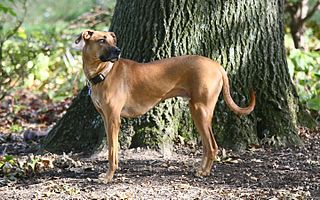
The Black Mouth Cur, also known as the Southern Cur, Southern Black Mouth Cur and the Yellow Black Mouth Cur, is a medium to large sized breed of cur-type dog from the United States. Originating in the south of the country, the breed is a popular hunting companion used to hunt a large variety of game.
The Treeing Cur is a breed of dog that originated in the mid-west of the United States. It was first recognized by United Kennel Club on November 1, 1998, due to the efforts of Alex and Ray Kovac. "Most Cur breeders were not well off and so they required a dog that could serve multiple purposes: hunter, guardian, and stock dog. The result was the Treeing Cur, which is the most varied in size and colors of the Cur breeds", according to United Kennel Club. They are primarily used to tree squirrels, raccoons, opossum, wild boar, bears, mountain lion, bobcat as well as to hunt big game.
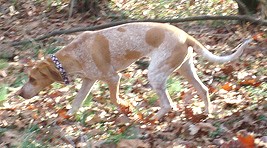
The American English Coonhound, also referred to as the English Coonhound or the Redtick Coonhound, is a breed of coonhound that originated in and is typically bred in the Southern United States. It is descended from hunting hounds, especially foxhounds, brought to America by settlers during the 17th and 18th centuries. The breed's first recognition came from the United Kennel Club in 1905 as the English Fox and Coonhound. Further recognition has been granted in recent years by the American Kennel Club, first in the Foundation Stock Service and in 2011 as a fully recognized member of the hound group.

The American Leopard Hound is an American breed of hunting dog. It is recognized by the United Kennel Club (UKC) as a scenthound and is in the American Kennel Club's Foundation Stock Service.
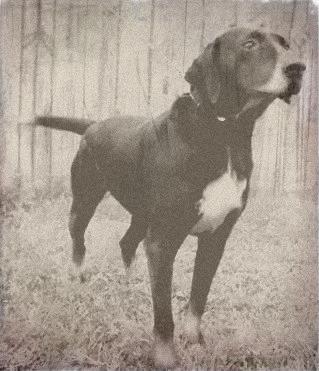
The Stephens Stock, also known as the Stephens Stock Mountain Cur or simply the Stephens Cur, is a breed of cur from the United States.


















